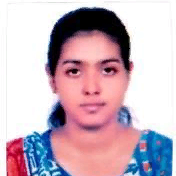
Iffat Ara Talin
Work place: Electronics and Communication Engineering Discipline, Khulna University, Khulna-9208, Bangladesh
E-mail: talin.iffat@gmail.com
Website:
Research Interests: Microwave Measurements, Microwave Photonics, Wireless Communication, Computational Learning Theory
Biography
Iffat Ara Talin is a student at Khulna University in Khulna, Bangladesh, studying Electronics and Communication Engineering. She is currently in her final year of Honors. Microwave/Digital communication, Machine learning and smart grid are among her research interests.
Author Articles
Home Occupancy Classification Using Machine Learning Techniques along with Feature Selection
By Abdullah-Al Nahid Niloy Sikder Mahmudul Hasan Abid Rafia Nishat Toma Iffat Ara Talin Lasker Ershad Ali
DOI: https://doi.org/10.5815/ijem.2022.03.04, Pub. Date: 8 Jun. 2022
Monitoring systems for electrical appliances have gained massive popularity nowadays. These frameworks can provide consumers with helpful information for energy consumption. Non-intrusive load monitoring (NILM) is the most common method for monitoring a household’s energy profile. This research presents an optimized approach for identifying load needs and improving the identification of NILM occupancy surveillance. Our study suggested implementing a dimensionality reduction algorithm, popularly known as genetic algorithm (GA) along with XGBoost, for optimized occupancy monitoring. This exclusive model can masterly anticipate the usage of appliances with a significantly reduced number of voltage-current characteristics. The proposed NILM approach pre-processed the collected data and validated the anticipation performance by comparing the outcomes with the raw dataset’s performance metrics. While reducing dimensionality from 480 to 238 features, our GA-based NILM approach accomplished the same performance score in terms of accuracy (73%), recall (81%), ROC-AUC Score (0.81), and PR-AUC Score (0.81) like the original dataset. This study demonstrates that introducing GA in NILM techniques can contribute remarkably to reduce computational complexity without compromising performance.
[...] Read more.Other Articles
Subscribe to receive issue release notifications and newsletters from MECS Press journals